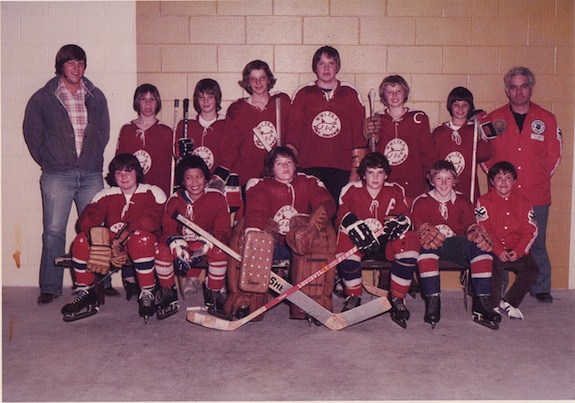The Stupid Reason the NHL Drafts Older Players First
Take note, coaches: stop listening to Malcolm Gladwell, and start listening to science

Image: Roland Tanglao
In the NHL, players’ birthdays fall into a strange pattern: the best players seem to all be born in the earlier months of the year. This pattern was extremely clear from youth hockey all the way up to the pros. In Outliers, journalist Malcolm Gladwell explained one possible cause of this weird birthday trend. Here’s New York’s summary:
Gladwell explains what academics call the relative-age effect, by which an initial advantage attributable to age gets turned into a more profound advantage over time. Because Canada’s eligibility cutoff for junior hockey is January 1, Gladwell writes, “a boy who turns 10 on January 2, then, could be playing alongside someone who doesn’t turn 10 until the end of the year.” You can guess at that age, when the differences in physical maturity are so great, which one of those kids is going to make the league all-star team. Once on that all-star team, the January 2 kid starts practicing more, getting better coaching, and playing against tougher competition—so much so that by the time he’s, say, 14, he’s not just older than the kid with the December 30 birthday, he’s better.
Coaches seem to draft based on this idea that older players—players born in the first three months—will have the advantage and be better. A new paper, published in PLoS ONE, looked at those numbers:
Compared to those born in the first quarter (i.e., January–March), those born in the third and fourth quarters were drafted more than 40 slots later than their productivity warranted, and they were roughly twice as likely to reach career benchmarks, such as 400 games played or 200 points scored.
But, actually, this is a daft way to put a team together. The birthday effect that Gladwell describes hasn’t held up to scrutiny, and, in fact, when you look at the Canadian Olympic hockey team, it’s not at all full of “older” players. The NHL doesn’t seem to follow that pattern either, according to SB Nation:
According to nhl.com, at the 2010 Olympic break there were 499 Canadians on NHL rosters. That’s about 55% of the players in the entire league. If you broke their birthdates down by quarters of the year you get the following:
Canadians Non-Canadians (as of the end of the 09-10 season)
Jan-Mar: 25.7% 34.2%
Apr-June: 28.5% 23%
July-Sept: 25.5% 21.3%
Oct-Dec: 20.3% 21.5%
As you can see, if there’s a country with an “old” hockey workforce, it’s not Canada. There were actually more Canadian NHL players born in September (43) than January (41), and June was the most populous month (50). True, there are more players born in the first half of the year, but the notion that Canada is only producing successful players from a small portion of the calendar seems to be, at best, somewhat of an overstatement.
Robert Deaner, the researcher behind the new study, wanted to show people that this birthday effect simply doesn’t hold up. He told the press office at Grand Valley State University:
“There’s no doubt that drafting professional athletes is an inexact science. Plenty of sure-fire first-round picks fizzle while some late-round picks unexpectedly become stars. But our results show that, at least since 1980, NHL teams have been consistently fooled by players’ birthdays or something associated with them. They greatly underestimate the promise of players born in the second half of the year, the ones who have always been relatively younger than their peers. For any given draft slot, relatively younger players are about twice as likely to be successful. So if teams really wanted to win, they should have drafted more of the relatively younger players.”
Take note, coaches: stop listening to Malcolm Gladwell, and start listening to science.
More from Smithsonian.com:
Climate Change’s Latest Victim: Ice Hockey
30th Anniversary of the Miracle on Ice
/https://tf-cmsv2-smithsonianmag-media.s3.amazonaws.com/accounts/headshot/Rose-Eveleth-240.jpg)
/https://tf-cmsv2-smithsonianmag-media.s3.amazonaws.com/accounts/headshot/Rose-Eveleth-240.jpg)